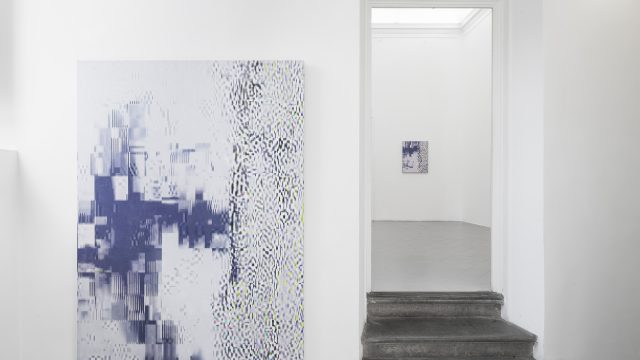Galleria Franco Noero is pleased to present The largeness of China seen from a great distance, the fifth solo exhibition by Pablo Bronstein in Turin and his first hosted in the gallery space of Piazza Carignano 2.
Room 1: The large drawing Stage Design is a cross-section through a baroque theatre, which looks out through a large distance onto a view of Chinese scene. Or the scene is a cross-section of a Chinese palace, which looks out through a vast distance onto a European baroque palace. Both sites of display hold each other in each other’s gaze. The drawing reflects the idea that China and Europe both considered themselves somewhat equivalent cultures, though of course each considered themselves superior, and able to adequately frame the other. The small drawing Roof in the Style of Regency Political Caricature alludes to the political caricatures of the early 19th century artist James Gillray, who made a large quantity of famous political images in which he criticised the political machinations of Britain in its quest for empire in the East. He made a good deal of mockery of the Prince Regent, who became obsessed with chinoiserie and dedicated a palace to it in Brighton. The drawing Chinese Clock mounted on French Bronze, Marble and Porcelain Base is a juxtaposition of two decorative styles related to the East-West trade. The first is in the production of export objects such as the clock supported by dragons, made by China for the European market, as well as the internal Chinese market interested in the novelty of European taste. The second is the plinth on which the clock sits, which alludes to the way in which Chinese export objects were framed and housed in elaborate styles by the European craftsmen on recipe of the objects from the Far East.
Room 2: Town is a wallpaper that refers to the wallpapers imported into England from China in the 18th century. Those wallpapers, made specifically for export, would feature buildings painted in axonometric perspective, set in idealised landscapes. For this wallpaper, Bronstein composes buildings in the style but multiplies them to form a town of endless size.
Room 3: Large Crane refers to the sudden expansion of urban areas in China. In particular it looks at the growth of medium-sized cities into megalopolises, with five-storey buildings giving way to a myriad of skyscrapers. The crane is a hypothetical, and improbable design in the “Chinese” style. The drawing Paper face-screen with European-style ormolu handle representing the Diana and Acteon narrative is a play on the surface of the blank paper representing directly the paper surface of the fan. The drawing refers to a history of conflated East-West objects, in which simple or minimal designed Chinese objects were imported into France and there overlaid and ‘framed’ by complicated ormolu mounts.
Room 4: Moon Revealed throughout Prunus Blossom is a video of two danced portraits facing the camera, overlaid. The work is framed as a romantic apparition of the moon shining through prunus blossoms, being witnessed by a person of high rank, flanked by two attendants. The moon fans herself while blossoms, represented by confetti, are thrown on her. The video is deliberately old- fashioned and exacerbates stereotypes.
Room 5: Entertainment at court: 100 European Style ways to greet a casual acquaintance in passing is a film which comically proposes that just as European ballets indulged in Orientalist flights of fancy through the 18th, 19th and 20th centuries, the Chinese were involved in the same return of gaze. The refined and mannered etiquette of court, taken to extremes in both Western Europe and China in the 18th century, is the starting point for the dance. The idea is that the Chinese court watches as two performers pretend to greet each in a myriad of formal ways that allude incorrectly to Western formal reverences. The repetition of action and the conflicted theatrical presentation of reality is deliberately Brechtian (Brecht’s The Good Lady of Zechuan is one of Bronstein’s key starting points for this exhibition).
Room 6: Two large drawings. The first of which is a hypothetical and greatly exaggerated master- plan for the examination exams of the Chinese Imperial Bureaucracy. The Imperial Bureocracy filled the West with awe, and the famously gruelling examination system for entering it ultimately provided the model for that increasingly employed in the West in the 19th century. The scale of the complex is improbable, but refers to the impression such a system made on the West. The reflection of the moon in the central pond, as well as the vignettes on each side with romantic 19th century European vistas of China, are an ironic juxtaposition to the bureaucratic and labyrinthine machine. The second drawing, Scholars’ Objects: A small double-gourd monochrome porcelain vase, a silver-gilt and lime green ‘champlevé’ enamel model of a guillotine, and a Sancai porcelain brush pot with branches of prunus blossom shows a group of scholar’s objects (Scholar’s objects are small-scale desk objects for use by high-ranking officials and intellectuals) is ostensibly a 20th century European Surrealist still-life, disguised as a 19th century Chinese still-life. The model of a guillotine refers to the East-West exchange of images and ideas, and in particular to the reduction of large-scale events and ideas into decorative motifs or cold objects of study when large distances are involved.
Room 7: Large Building, is a wallpaper representing a very complex building crammed into a small corner room deliberately to exaggerate the perceived complexity and irregularity of Chinese architecture. The representation of traditional Chinese architecture in Europe was always one of zig-zag and confusion. The impossibility of getting the large image to sit comfortably in the small space is a comic allusion to the difficulties of harmonious cultural juxtapositions.
Room 8: Emperor in Flower Garden, despite the Orientalist title, is a neo-baroque ballet in which three groups of dancers compose abstract shapes in turns directly in front of the camera. The device of having the representation of the Emperor watching the action but himself being watched at the symmetrical centre at the back of the stage, is a device taken from Jacobean Masques, but is true of the role of authority in the theatre before the 20th century. The presentation of these groups of dancers as ‘flowers’ belonging to the Emperor is of course deliberately retrograde and a direct critique of the sexual and power politics of ballet.
Room 9 – Office: The small pencil and ink drawing, Zeppelin hangar, similar to the Large Crane, takes international, functional technology, and overlays it with decorative stylistic motifs. The structural elements of the hangar are turned into Chinoiserie trellis in a needless display.
Room 10: This wallpaper, Tiers of Houses, repeats the houses seen in room 2, but whereas in room 2 the houses form a large town, here they are stacked commodities awaiting shipment. They are framed behind a row of repeated columns derived from the columns in the Chinoiserie style palace, the Brighton Pavilion in England. The repetition and commodification of both the Chinoiserie houses and the columns refers to both how large the trade in Chinese export artefacts was in the 18th and 19th century, and how oppressive and repetitive the style became. It is also a comment on our fears and admiration of the scale of Chinese industry and manufacture.
Galleria Franco Noero (press release)

Pablo Bronstein, Città / Town, 2017, computer-generated drawing printed on paper, dimensions variable. Edition of 3.
Courtesy Galleria Franco Noero.

Pablo Bronstein, Città / Town, 2017, computer-generated drawing printed on paper, dimensions variable. Edition of 3.
Courtesy Galleria Franco Noero.

Courtesy Galleria Franco Noero.
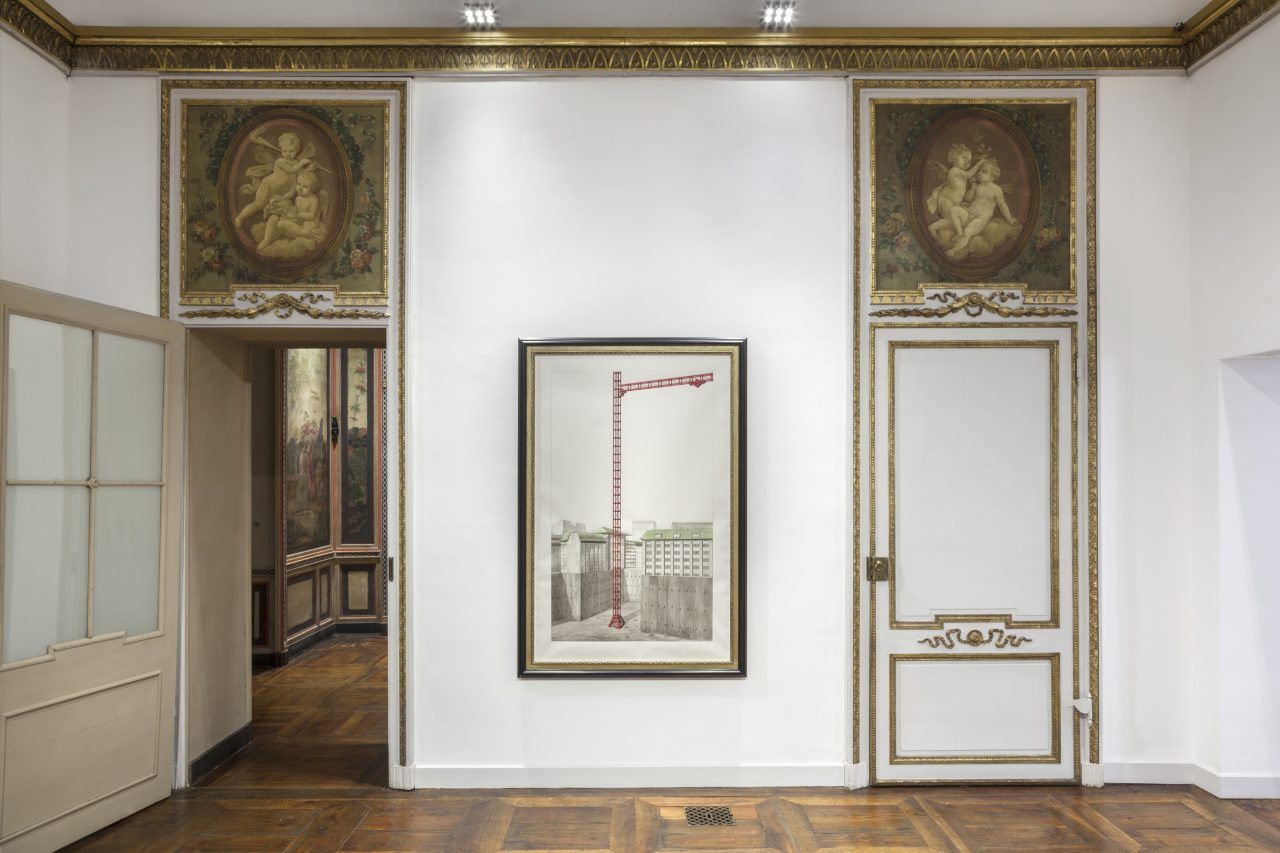
Courtesy Galleria Franco Noero.
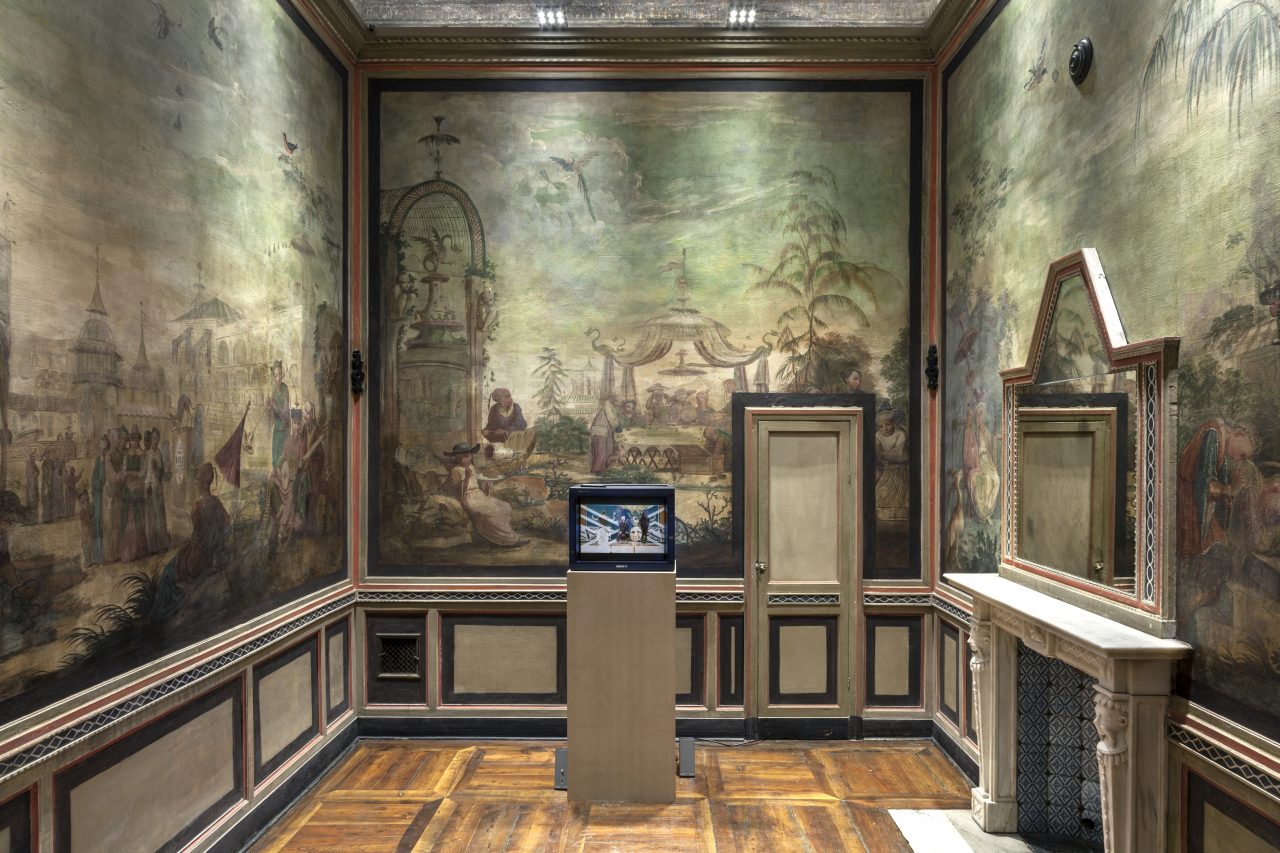
Pablo Bronstein, Moon Revealed throughout prunus blossom
video, 6’04’’. Edition 1/1
Courtesy Galleria Franco Noero.
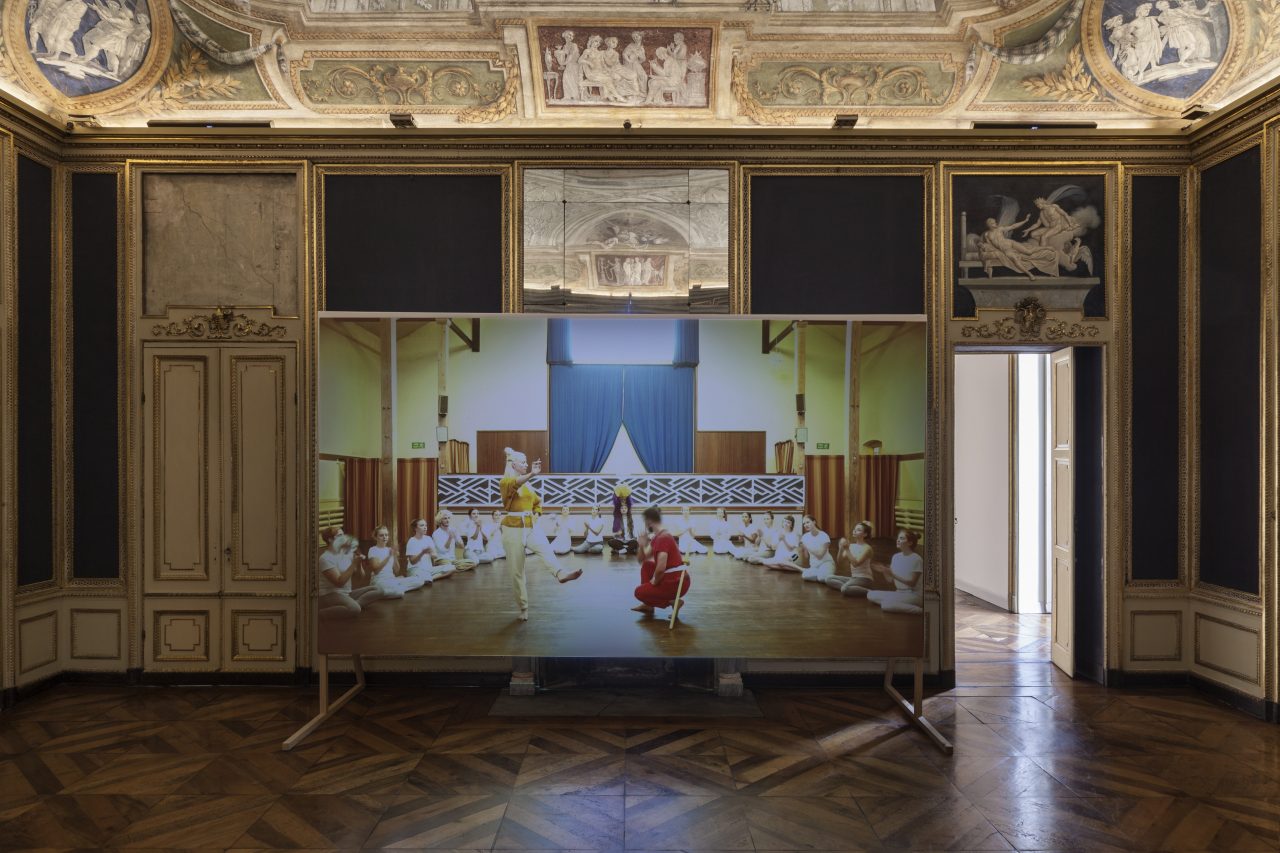
Pablo Bronstein, Entertainment at court: 100 European Style ways to greet a casual acquaintance in passing, 2017
video, 25’31’’. Edition 1/1
Courtesy Galleria Franco Noero.

main examination hall to the Imperial Bureaucracy and Administration, Beijing, 2017
ink and watercolor on paper, 129 x 158,5 cm, framed. Courtesy Galleria Franco Noero

Pablo Bronstein, Strati di case / Tiers of houses, 2017
computer generater drawing printed on paper, dimensions variable. Edition of 3.
Courtesy Galleria Franco Noero.
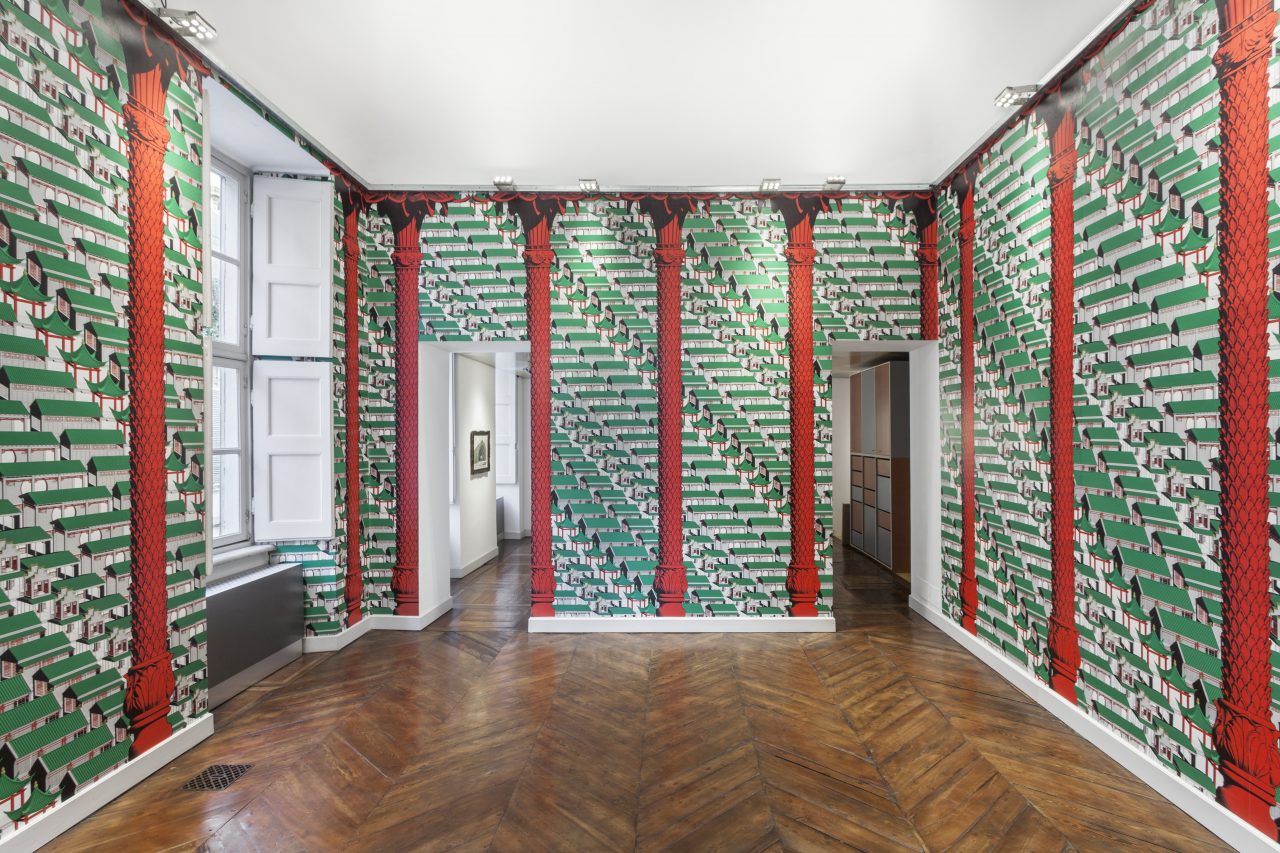
Pablo Bronstein, Strati di case / Tiers of houses, 2017
computer generater drawing printed on paper, dimensions variable. Edition of 3.
Courtesy Galleria Franco Noero.



